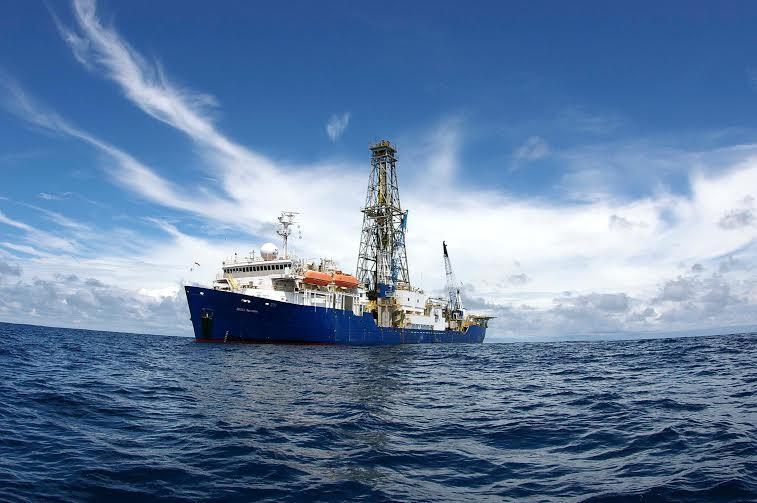 NIL
NIL
Uncovering the secrets of the Himalayas off the coast of Mumbai
Mumbai, Apr 2 (IBNS) Despite being thousands of kilometres apart, a team of international scientists are collecting samples from the bottom of the Arabian Sea to find out how the growth of the Himalayan mountain range has affected the Asian Monsoon over the last 50 million years.
The drilling, taking place off the coast of Mumbai, India, will also help scientists predict monsoon intensity in the future.
The Asian Monsoon is one of the most dramatic climactic phenomena on the planet today. Almost two-thirds of humanity live in countries influenced by the Monsoon, with the strength and variability of its annual rains crucial to their prosperity. Summer heating of the Himalaya – and the Tibetan Plateau behind the mountains – generates low-pressure and summer rains in South and East Asia. In winter a reversed high-pressure system is established, with dry, cold winds blowing out of the continent..jpg)
It is thought that the modern Monsoon reflects the fact that the Himalayas is the largest mountain chain seen on Earth for more than 500 million years. Its huge tectonic forcing has correspondingly made a particularly large impact on the planet’s atmospheric systems. However, to confirm the relationship between the Himalaya-Tibetan Plateau and the strength of the Monsoon, scientists need continuous geological data dating back to the collision of the Indian and Asian plates around 50 million years ago.
The current expedition is being led by the International Ocean Discovery Programme (IODP), the world’s largest international research collaboration outside the space programme. The IODP aims to explore the history and structure of the Earth as recorded in sub-seafloor sediments and rocks.
The erosion of the Himalaya, largely driven by the Asian Monsoon, has resulted in the accumulation of the world’s two largest underwater sedimentary deposits: the Bengal Fan in the Bay of Bengal and the Indus Fan in the Arabian Sea, where the IODP Expedition 355 team will begin drilling in April off the coast of Mumbai. The two basins jointly preserve records of past erosion and weathering that are controlled, at least in part, by the Monsoon, that in turn may be linked to the progressive uplift of the Tibetan Plateau.
Dr James Bendle, Reader (Associate Professor) in Organic Geochemistry, University of Birmingham is one of the senior European scientists on the IODP 355 research team. He said:
“Using various methods we can decode the story of climate change as recorded by microfossils and chemicals. On land, sediments and rocks are continuously being disturbed, eroded and deposited. However, in the quiet depths of certain parts of the deep ocean each layer of sediment is like a page of a book, where the climate story has been faithfully recorded and left undisturbed.
“The Indus Fan in the Arabian Sea, despite being thousands of kilometres away from the Himalayas, is the perfect place to study the relationship between the Himalaya-Tibetan Plateau and the Asian Monsoon. Over millions of years, sediment has slowly made its way from the mountain range, mainly via the large rivers of the Punjab, to the ocean.”
The research team are particularly interested in finding sediment from around 3.5, 15 and 50 million years ago, when carbon dioxide (CO2) levels were as high – or even higher – than today. The IODP research team hope that by uncovering how the Monsoon responded during these phases, they can predict what will happen in the future as CO2 levels continue to rise.
Dr Bendle added: “Understanding what controls the Asian Monsoon and how it has changed in the past is important not only to scientists, but also the general population whose livelihoods are affected by it year upon year.”
Dr Bendle will spend the next two months on board JOIDES Resolution, the IODP’s US-operated scientific drilling ship and floating laboratory. Up to 50 scientists and technicians and 65 crew members will call the ship home between 31 March and the end of May, with operations taking place 24 hours a day. JOIDES Resolution will be drilling in water around 3.5 kilometres deep, with each drill deployment taking up to 11 and a half hours in each direction.
Photo credits:
JOIDES Resolution 1 – Henk Brinkhuis
JOIDES Resolution 2 – Arito Sakaguchi & IODP/TAMU
Top Headlines
-
Environment
Indi Setu: Wildlife on the Brink: Can We Rewild a Warming World?
October 25, 2025
-
Environment
SonaSPEED motors power NASAISRO synthetic aperture radar mission
August 01, 2025
-
Environment
How green is my city
July 01, 2025
-
Environment
India's River Dolphin: Clear And Present Danger
May 28, 2025
-
Environment
South Kashmir The costs of coexisting with predatory wildlife
May 12, 2025
-
Environment
Sariska Tiger Reserve: A maharani recognised
May 02, 2025
-
Environment
Arunachal Pradesh: Retracing a century-old biodiversity in Siang Valley
April 04, 2025
-
Environment
Toxic air and smog choke Delhi as experts at COP29 in Baku warn how dragging feet on fossil fuel reduction can cause catastrophe
November 19, 2024
-
Environment
The last feral horses of India
November 11, 2024
-
Environment
Indian savannas: New remote sensing study spotlights misclassification and flawed tree-planting
September 16, 2024

